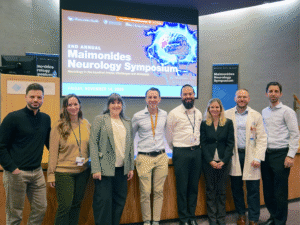The effects of alcohol intoxication and alcohol use disorder (AUD) often lead patients to the emergency room, whether for acute conditions like alcohol poisoning, trauma, or assault, or long-term medical and psychological conditions associated with alcoholism. Many of these patients are exclusively or primarily treated in the ED.
While the scope of emergency medicine has expanded to develop ED treatments for opioid addiction as the national opioid crisis persists, AUD has long remained relatively overlooked, despite alcohol being the most-used intoxicant in the world. Reuben Strayer, MD, emergency physician at Maimonides, is aiming to change that.
Changing the Outlook for Alcohol Use Disorder in the ED
Earlier this year, Dr. Strayer was the lead author on a paper published in The Journal of Emergency Medicinetitled “Emergency Department Management of Patients With Alcohol Intoxication, Alcohol Withdrawal, and Alcohol Use Disorder: A White Paper Prepared for the American Academy of Emergency Medicine.” The pioneering paper provides the first comprehensive guidance for recognizing, treating, and responsibly discharging patients with alcohol withdrawal syndrome, alcohol intoxication, and AUD, according to Dr. Strayer. It includes consideration for a spectrum of moderate to severe presentations of these conditions, which are deceptively routine.
“Alcohol-related ED visits are rapidly escalating, and these patients are at high risk for poor outcomes, especially frequent presenters for care, nearly 1 in 10 of whom will die within 1 year,” the paper says. “The routine nature of these visits and the gradual pace of their decline conceals this risk; alcohol-related presentations in many centers are so common, and alcohol use so broadly accepted, that its impact is easily overlooked, when, in fact, every harm caused by alcohol is preventable.”
New Guidelines Empower Clinicians to Help Patients Address Harmful Alcohol Use Cycles
Many of these patients are discharged sober and with short-term issues treated, but re-enter a cycle of alcoholism after their hospital visit. This new guidance aims to confront this, and intervene before addiction becomes medically, psychologically, and socially ruinous.
“Patients who are heavy alcohol users and chronic alcohol users often have a variety of comorbid psychiatric, social and medical problems that we often dismiss because they’re, for example, picked up on the street intoxicated,” Dr. Strayer said. “The usual paradigm for care is to park them in the corner of the department where they can sober up, and then allow them to basically walk out and, usually, return to their drinking.”
Dr. Strayer hopes that this guidance will move emergency departments away from this treatment model, and toward a model of addressing alcohol-related harms and intervening for patients’ future health. Emergency physicians hold a unique position to intercede for patients who need assistance in treating these conditions, but clinicians are often also discouraged, feeling as though they have little to offer these patients.
“My hope is that, similar to the use of buprenorphine and the de-stigmatization of opioid use disorder in the emergency departments, that across the country we will see a relatively robust uptake among a set of motivated clinicians,” Dr. Strayer said. “There’s an opportunity to do better. I think that we’ve learned with the way we’ve been able to intervene on OUD, opioid use disorder, that we can do better. And I’m optimistic that we’re going to take that same energy and apply it to alcohol use disorder.”




